Thoughts on the Apple Watch have been simmering on my mental back burner since it was announced in September, and I followed along with the announcement yesterday to see what new things we might learn about the product — most significantly, the prices for the higher-end models. All we knew up to this point was that they “start” at $349, and that’s for the lowest-end, anodized aluminum Apple Watch “Sport”, with a “fluoroelastomer” (a.k.a. rubber) band. (Side note: It seems Apple is taking great pains not to call the band “rubber” in their marketing, yet I noticed Christy Turlington Burns, in her appearance on stage yesterday, referred to it — quite dismissively, no less — as “rubber”, and I think I saw Tim Cook flinch just a bit.)
The stainless steel “regular” Apple Watch and the gold Apple Watch “Edition”, with fancier bands, would clearly cost more… much more. I was frankly surprised the starting price for the steel Apple Watch is only $200 more than the Sport, and I was not at all surprised that the Edition starts at $10,000. But the fact that it does start at $10,000 got me thinking more about why. I have some ideas, which I will explore here, but first some more general thoughts on the Apple Watch.
Not my taste
First off, I personally am not really in the market for an Apple Watch at all. I find it interesting, but a) I don’t really want to wear something on my wrist, and b) I’m not interested in this until the second or third iteration. But if I were to buy an Apple Watch, there is absolutely no question that I would get the Sport. I wouldn’t even consider either other option, and price is only a small factor in that. I just don’t like shiny objects. Perhaps it’s my stubborn proletarianism lashing out, but I find wearing shiny items like a highly polished watch (in either stainless steel or gold) to be an ostentatious display of… something. Not my personality.
I especially dislike gold. I can tolerate the mild “champagne” gold color Apple has introduced on the iPhone, iPad and now MacBook, though I don’t personally want them. But pure, shiny gold is something I associate closely with Donald Trump’s raging ego. (Sorry… very specific and most probably unfair, but it is what it is. Again, just my personal taste.)
Clearly I am not the kind of person who desires high-end luxury goods. I appreciate high quality. That’s why I like Apple’s products in the first place. But there is definitely a level of luxury to which I cannot, and emphatically do not, aspire. So be it. Despite my own tastes, I do think I have some idea why Apple has created the Edition version of its watch, to whom it’s targeted, and why it costs so much.
So whose taste is it?
Most people who can’t afford it think $10,000 is an insane price to pay for a watch, and they especially cannot comprehend how someone would want to spend that much on a high-tech watch that will become obsolete in a few years. I’ve read many comparisons with Rolex and other high-end mechanical watches that are priced in that range, which are typically bought to last a lifetime, if not to become a family heirloom passed down through the generations.
This cannot be exactly the audience Apple is targeting, either. Because there’s a range of wealth where someone can afford a $10,000 watch, but it’s still a substantial investment for them — the kind of thing you buy once, ever. And then there’s the range of wealth where someone can easily drop $10,000 on a whim and not think twice about having to do so again in a few years.
This is the target market for the Apple Watch Edition. It’s extremely small. But it exists.
So the question then becomes, why is Apple targeting this market at all?
Watches are different from phones and other gadgets in a significant way that Tim Cook touched on yesterday. But he didn’t fully probe that difference and why it might make sense for Apple to create a “disposable” product with a 5-figure price tag. Watches are something you wear, a fashion accessory in a way that other objects that you merely hold or carry in your pocket are not. They are an extension of who you are, at least for some people, and quite likely for this exact small niche market I’m talking about.
In short, I believe the subset of people for whom the Apple Watch Edition is made are, in general, willing to carry the same smartphone as “the masses”… but they are not willing to wear a similarly proletarian watch.
These people are important customers to Apple. Not just because they spend a lot of money on Apple’s products, but also because they tend to be high profile people whom Apple wants the public to see carrying, using, and now wearing Apple’s products. And the only way to get them to wear an Apple Watch is to make one that is as pretentious “discriminating” as their other tastes.
But why so exclusive?
Now there is one point Tim Cook mentioned that I interpreted in a different way from other analyses I’ve seen of yesterday’s announcement. Tim Cook said something to the effect that Apple Watch Edition will be available only in extremely limited supplies, and only in “select retail stores”. Most of what I’ve read suggests this means that only some of the Apple Stores will be carrying Apple Watch Edition. Personally, I don’t think any Apple Stores will be carrying it. I think it will only be sold in exclusive luxury jewelry and watch stores. Rodeo Drive kind of places. (I guess… what the hell do I know? I’m sure there’s some ultra-luxury shopping venue I’ve never even heard of, and the people who shop there look down their noses at lowly Rodeo Drive.)
The point is, I think Apple is going out of their way to make Apple Watch Edition so absurdly ultra-exclusive because there’s a very small, very wealthy, and very important niche market for a product this extreme, but for whom it needs to be this extreme, solely as a differentiator. For everybody else who might even consider such a product — everybody — they will be satisfied by either the Apple Watch Sport or the Apple Watch.
The only difference between the regular Apple Watch and the Edition is the metal and the strap. The electronics are identical. The amount of extra R&D Apple had to put into creating the Edition can probably pay for itself, even if the Edition sells just a few hundred units. So, from that perspective, why not create it? But if you do, the only way to make it worthwhile is to go all out, if not completely overboard, with the exclusivity and perceived “luxury” of the object.
I think that’s exactly what Apple has done.



